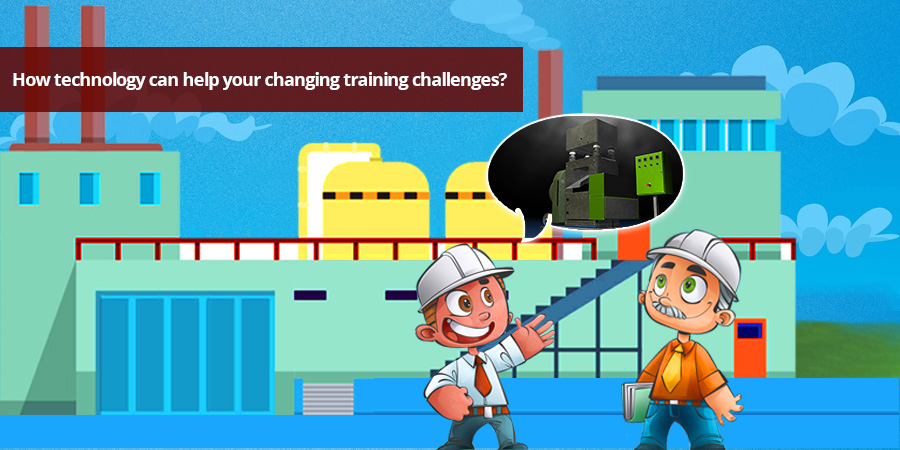How technology can address evolving training challenges

Organizations, since the days of steam powered looms to process logic controllers in the late 60s, to now with sophisticated automation and robotics, have been growing and evolving like an organism which tries its best to assimilate newer, emergent technologies, in order to be more efficient and productive.
The scale of automation and digitization has been affirmative and disruptive at the same time. This poses unique challenges of its own as proposed by this McKinsey article, as it provides the breakdown of an impending transition, set to take place within coming decade and how it affects the workforce, piece by piece through numbers backed by their survey study. A glaring highlight that stands out is the lack of increase in corporate budgets towards training the workforce to align with these tides of change.
If we consider these as an exterior challenge towards operational aspect – people and machinery, then, the innate challenge facing organisations from within is about managing functional compliance.
Does the organisation have an efficient way of managing workplace as directed by OHSAS 18001 or the soon to be introduced ISO 45001? Right from the initial goal setting, preparation to its successful execution is one part of the journey. The parallel effort is to set out and establish compliant methods within everyday practices which should integrate seasoned as well as the new employees. This lends weight to a constant need of upskilling and learning.
In a tacit manner, technology can be the answer to such challenges raised by technology per se. Both the situations described from the operational and compliance aspect can be made manageable through effective animation based training modules.
Animation as a training tool, can allow your workforce to come to grips with the degree of automation and its level of sophistication – for both office workspace and say, a facility shop-floor.
The flexible learning method that adapted animation movies offers to its untrained audience with the help of a reasonably qualified trainer are unparalleled, tried and tested.
The biggest feature animation movies deliver is the on-demand training which can be arranged as per the shifting priorities of a large workforce (maybe even spread over different geographies) or can be scheduled as per the worker’s availability. The delivery, effectiveness and ease provided by this medium remains unchanged.
Automation or autonomation or digitization can take several different forms but these tools that make our lives easier have complex logic and processes, going on behind the curtain.
Animation movies can part those curtains by slicing the concepts into understandable pieces of information, layer by layer, one process at a time. It can illustrate the workings of technical instrumentations and machinery by helping the workforce visualize its ‘inner-workings’, to put it simply.
Functional EHS compliance can prove to be life-saving but sometimes remains misunderstood or misinterpreted in day to day work situations. Animation movies have the capacity to absorb such myriad scenarios and translate them understandably onto the screen, with little assistance required in terms of directives due to its life-like quality.
Moving forward as organisations assume new roles and start to integrate newer processes, animation movies can alter and adjust without showing poorly on their quality of information or the delivery of designated message.
The winning aspect of animation movies in order to address the changing challenges of training is its efficacy over different cultural identities. No matter the lingual or cultural gap that exists between the worker and their workplace, animation can serve as the bridge, effortlessly and without the loss of underlying meaning.


